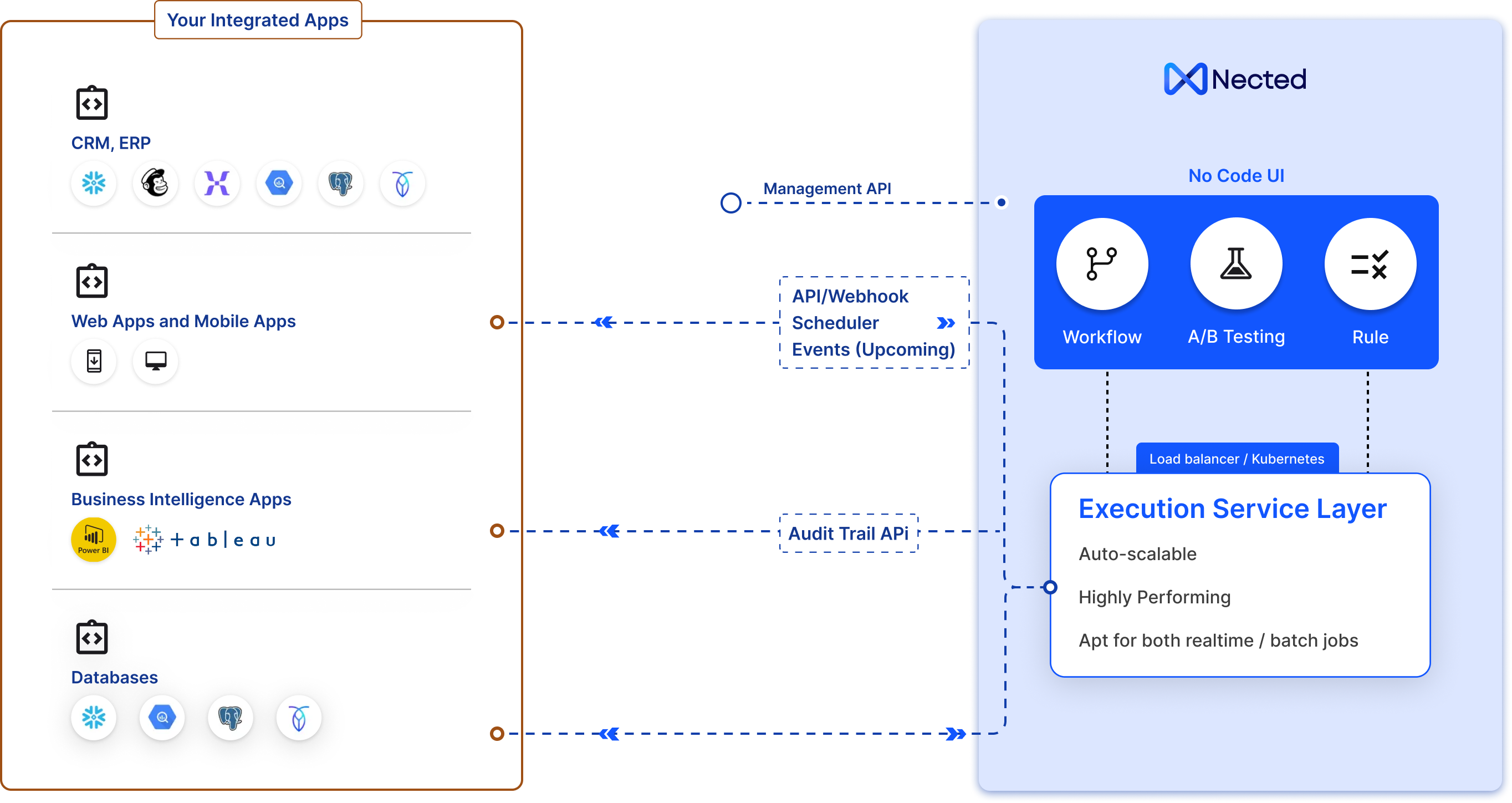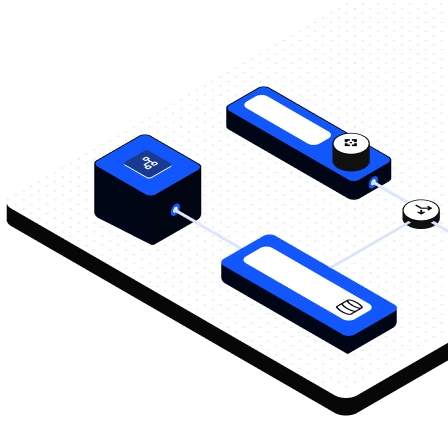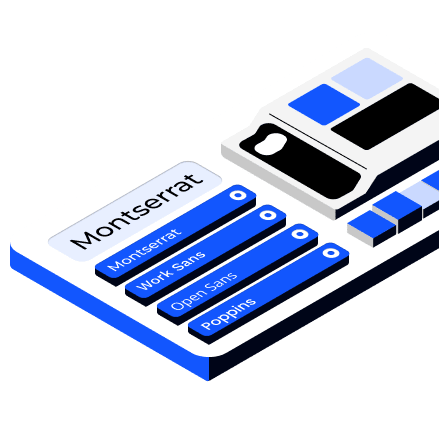
Manual reorder thresholds and siloed spreadsheets cause frequent stockouts or excess inventory, tying up cash and losing sales.

Reorder approvals and integration delays add days to replenishment cycles, increasing backorders and lost revenue.
.webp)
Static minimums and safety stock ignore lead-time variability and channel demand, producing excess buffer or repeated stockouts.
.webp)
Teams lack a sandbox to simulate reorder logic and promotions, increasing the risk of overstock or lost sales when rules go live.

Legacy systems fail under seasonal spikes and multi-warehouse allocation complexity, causing fulfillment errors and delays.

All inventory logic changes require engineering time, creating backlog and slow response to market or supplier changes.

Business teams create complex reorder, allocation, and promotion rules with drag-and-drop logic and pre-built templates—no developer cycles required.

Plug into ERP, WMS, POS, marketplaces and supplier portals via pre-built connectors or lightweight APIs for bi-directional data flow and instant activation.

Automatically route orders to the optimal fulfillment center based on inventory, SLA, shipping cost, and channel priorities—reducing late shipments and split-fulfilment rates.

Run thousands of what-if scenarios and live simulations to validate reorder changes across products and warehouses—then publish with instant rollback.
.webp)

Seamlessly integrate with any system using simple API-based connectors. No need for complex configurations—connect databases, third-party services, and internal tools with just a few clicks.
.webp)
Leverage a powerful rule engine with multiple rule types, including Simple Rules, Decision Tables, Decision Trees, Rule Sets, and Rule Chains to handle complex logic effortlessly.
.webp)
Automate workflows with Action, Rule, Workflow, Code, Database, and REST API Nodes, while Loop, Delay, and Switch Block manage execution.

Efficiently oversee the entire rule and workflow lifecycle with built-in versioning, rollback capabilities, and staging environments, ensuring seamless transitions from testing to production without disruptions.
.webp)
Deploy Nected anywhere—choose multi-region cloud hosting for high availability or self-host on your infrastructure for complete control and compliance.

Gain full visibility into your decision rules and workflows with audit trails features, and real-time dashboards. Stay compliant and track every change with ease.

Deliver a fully white-labeled experience with embedded user functionality. Use Nected as your own branded decision engine.

Operate with confidence using enterprise-level security, role-based access control, and scalable infrastructure that ensures data integrity and performance even at scale.

Deploy intelligent AI Agents to automate document extraction, text classification, data enrichment, or any other domain-specific task. Build your own agents or plug in pre-trained ones directly into your workflows.

Integrate APIs, databases, and AI models like OpenAI or Vertex in minutes—no coding, just simple drag-and-drop setup.

Nected matches enterprise-grade rule capabilities from Pega and DecisionRules—no-code visual rule authoring, real-time decisioning, audit trails, and multi-channel deployment—while delivering faster time-to-value and simpler integration. Unlike heavyweight deployments, Nected provides plug-and-play connectors for ERPs and WMS, versioned rule libraries for compliance, and a single visual canvas that business users own. This yields faster campaign rollouts, fewer developer cycles, and measurable reductions in stock costs.
Business teams and inventory managers can author and publish reorder and allocation rules in hours using the drag-and-drop rule builder. IT teams handle initial ERP/WMS connectors once; after that, non-technical users operate autonomously—reducing developer dependency by up to 90% and enabling weeks-to-days acceleration for inventory initiatives.
Yes. Nected is built for high throughput and low-latency decisioning—capable of running tens of thousands of inventory decisions per second across distributed warehouses. The platform supports horizontal scaling, queuing, and fault-isolation patterns that ensure consistent SLA adherence for enterprise operations.
Nected provides role-based access control, field-level encryption, audit logs, and deployment options (cloud, private cloud, on-prem) to meet security and compliance needs. Data residency, SOC2-ready controls, and fine-grained policy management make it fit for regulated supply chains and large retail customers.
Invocations refer to the number of times your workflows/rule is triggered via API, cron or other trigger. It will count the parent rule/workflow and can have as many rules, nodes within it. This metric is often used for billing purposes. Compared to other products, invocations as a billing metric can be more cost-effective and transparent, aligning closely with your actual usage and needs. It ensures you pay for the value you receive, rather than flat rates or less relevant metrics.
If you exceed, you'll be charged based on additional usage and will be added in your monthly charge. In case of payment failure after grace period, your plan will be reverted to free trial limiting your monthly execution and # of rules/flows as per free plan, however all your existing rules/workflow data would be kept intact.
Firstly, we do not have a vendor lock-in, so you can cancel anytime you want. However, if you decide to cancel once your subscription for a given period has started then you would be able to cancel at the time of the next billing cycle only.
Yes, you can typically upgrade your Nected plan at any point during your billing cycle. The upgrade process is usually straightforward, often involving just a few clicks in your account settings. Upgrading mid-cycle may involve prorated charges for the higher-tier service.
The best plan depends on your specific needs, such as the expected number of invocations, the complexity of your workflows, and the level of support you require. It’s a good idea to start with a basic plan and upgrade as your needs evolve, especially if you're new to Nected. Moreover, you can also write to us at assist@nected.ai and we will help you figure out the best plan for your brand.
Yes, Nected usually offers assistance in setting up and creating a Proof of Concept (POC), especially under certain plans. This assistance can include access to customer support, documentation, and possibly dedicated account management.
The Startup and Growth plans typically provide basic to enhanced support, including access to customer service through email or chat, a knowledge base, and possibly community forums. Response times and the extent of personalized assistance may vary between these plans.
The on-premise plan generally offers the most comprehensive support, including dedicated account managers, 24/7 support, and tailored assistance for deployment, maintenance, and troubleshooting. This plan is best suited for businesses with extensive, mission-critical use of Nected.